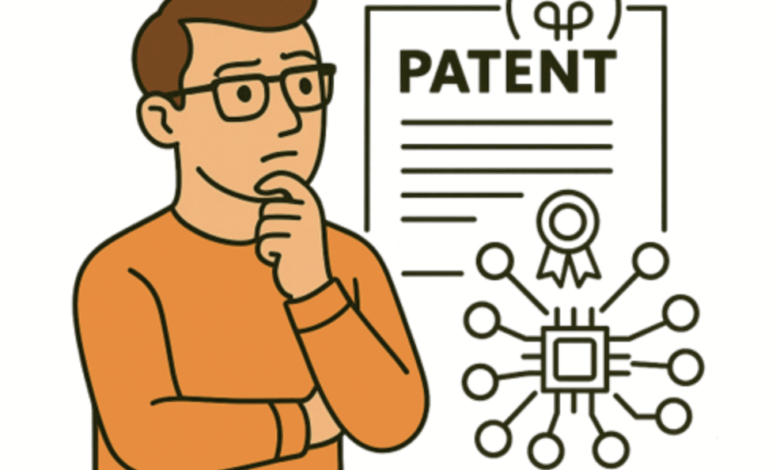
Let’s say you’ve spent months (or maybe years) building a machine learning model you’re actually proud of. It works. It’s useful. It might even change your industry. And now you’re wondering: Should I patent this? Can I patent this?
Short answer? Maybe. But it’s not as straightforward as you’d hope.
Patenting ML Isn’t Like Patenting a Toaster
Here’s the thing: machine learning patents are complicated. Not because your model isn’t innovative, but because U.S. patent law hasn’t fully caught up with how AI actually works.
You’re not just filing for a physical gadget. You’re dealing with something that learns—and that learning often happens through data, not just code.
So the question becomes: what exactly are you patenting? The algorithm? The way it processes data? The outcome it spits out?
Turns out, how you frame your invention can make or break your application. That’s why it’s worth consulting an IP lawyer who understands the nuances of AI and emerging tech—they can help you position your patent in a way the system recognizes.
Data-Driven vs. Model-Driven: Yes, That Matters
Let’s say your innovation involves the way a model adapts based on input data. You’re thinking: clearly patent-worthy. But if you’re claiming the data itself, or even the use of public data, you might hit a wall.
Why? Because courts don’t like to award patents for “abstract ideas,” and algorithms trained on public data can sometimes look exactly like that: abstract.
This is where an experienced IP lawyer becomes essential. They’ll know how to shape your claim—because how you frame it can make all the difference.
If your claim focuses more on how the model functions—say, a unique architecture, or an original process the model runs through to get its results—you’ve got a better shot. But even then, it’s not a slam dunk.
The line between “abstract idea” and “technical solution” is blurry. That’s why having the right IP lawyer matters more here than in most tech spaces.
Why Location Still Matters
You’d think federal patent law would be the same no matter where you live. And technically, it is. But in practice? Not so much.
Take New York City. It’s a hub for AI development—and now, for AI patent expertise, too. More specialized IP firms are popping up here, working closely with startups, academic labs, and solo inventors. They know how to position ML innovations and AI tools the right way.
And they’re shaping the outcomes. Patent examiners are human, after all. A strong, locally grounded legal argument can sway things. Especially when it’s crafted by someone who’s been through this AI-specific wringer before.
So yeah, your zip code doesn’t decide your patent—but your lawyer’s zip code might help.
The Regulatory Gray Zone You’ll Need to Navigate
ML is still the Wild West in a lot of legal ways. But it’s not lawless.
There are a few hurdles you’ll probably run into:
- The “Alice” ruling: Courts love tossing out software patents under this ruling if they think your model is “just” doing math.
- USPTO’s shifting standards: The U.S. Patent and Trademark Office updates its rules a lot—especially for AI. What worked a year ago might fail today.
- Bias and explainability requirements: If your model affects people (think: hiring, lending, medical diagnostics), regulators may ask how and why it makes its decisions. If you can’t explain that clearly in your patent, expect pushback.
All of this adds up to one big message: You can’t just wing it.
So What Should You Actually Do?
First, talk to someone who’s been through it. Not just any patent lawyer—someone who understands ML and knows how to phrase things the right way. The difference between “a model that identifies anomalies” and “a dynamically adaptive system for targeted anomaly detection” could be everything.
Second, don’t assume your invention speaks for itself. The way you describe it in your filing has to do the heavy lifting. The USPTO doesn’t care how brilliant your model is if the language isn’t airtight.
And finally, if you’re based in NYC—or even just passing through—it’s worth connecting with legal firms focused on AI-specific IP. This is one of the few cities where innovation and law are starting to speak the same language. Especially as AI changed cybercrime, reshaping the kinds of inventions—and threats—the patent office sees, having the right legal framing is more important than ever.
Cutting Through the Noise: ML Patents Simplified
Yes, you can patent machine learning models. But it’s not a casual process, and the rules change faster than most people can keep up with. It requires careful strategy, precise language, and often expert guidance to navigate the complexities. Staying informed and proactive is key to protecting your innovation effectively.
Are you still stuck? Ask around. Book a consult. Don’t let red tape be the reason your model never sees the light of day.





